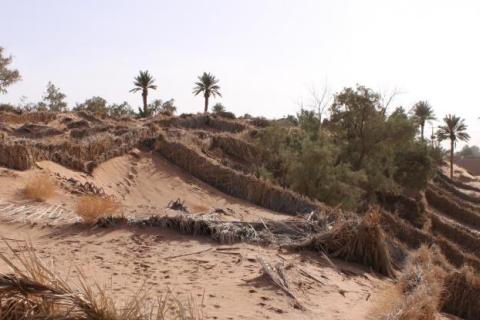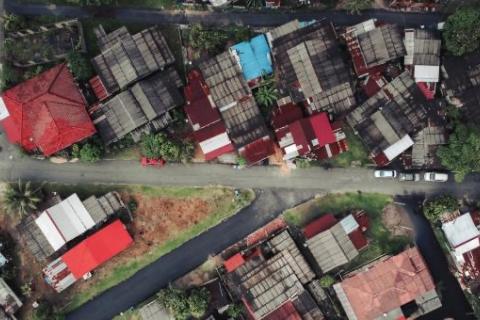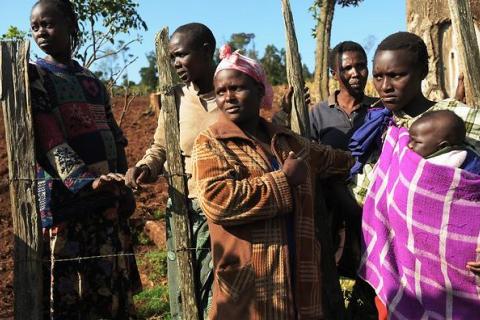Asia-Pacific Off Track: 20% of SDG Indicators Predicted to be Worse in 2030
By Catherine Benson Wahlén, Thematic Expert for Human Development, Human Settlements and Sustainable Development (US)
Sustainable Forests and Reaching the SDGs
Whether from the emergence of infectious diseases, the growing risks to global food systems, or from the increasing variability in global climate and local weather patterns, it is evident that we urgently need to rebalance our relationship with nature. Our relationship with forests is a prime example.
Forests are among the most biodiverse of Earth’s ecosystems. They sequester carbon and help to mitigate against climate change. They protect watersheds and help to control soil erosion. And yet, around 11% of carbon dioxide emissions come from deforestation and forest degradation, which is second only to the energy sector.
The 21st of March was the International Day of Forests, and it convened under the theme of forests and biodiversity. This is fitting in 2020, the beginning of a critical decade for the planet. There will be landmark moments early in the decade, including the anticipated adoption of a new post-2020 global biodiversity framework.
The United Nations Environment Programme World Conservation Monitoring Centre (UNEP-WCMC) is a Centre of global excellence in biodiversity. Over the past 10 years, we have been closely involved with REDD+, an initiative under the climate change convention (UNFCCC) that aims to support developing countries to reduce emissions from deforestation and forest degradation, and to promote the conservation, sustainable management and restoration of forests. Working closely with the UN-REDD Programme, we help countries to plan for and access results-based payments for these actions.
In work led by UNEP-WCMC, the UN-REDD Programme has supported over 20 developing countries to analyze where REDD+ actions could result in multiple benefits beyond carbon. Through spatial analyses carried out in close collaboration with national partners, countries have been empowered to identify areas that have potential for forest conservation, restoration and sustainable management, and can also help secure a range of additional important benefits for people and planet.
These analyses have shown how sustainable forest practices across the planet can contribute to a wide range of the Sustainable Development Goals.
One such example is Costa Rica. The National REDD+ Secretariat, together with FONAFIFO (the country’s National Forestry Financing Fund) and the UN-REDD Programme used spatial analyses to explore where REDD+ actions could help secure benefits beyond carbon, such as enhanced water regulation to support communities vulnerable to water stress, the potential for socio-economic improvements from forest-dependent livelihoods, and from ecotourism.
The work emphasized areas of overlap between the National REDD+ Strategy and spatial priorities for Costa Rica’s other objectives, such as national development, restoration and biodiversity conservation. Considering these benefits when planning and implementing REDD+ will help progress towards SDGs 1 (No Poverty); 6 (Clean Water and Sanitation); 13 (Climate Action); and 15 (Life on Land), among others.
More recently, this work also featured in the development of Costa Rica’s Gender Action Plan (contributing to SDG 5 on Gender Equality). Spatial layers showing the proportion of women by district contributed additional insight and helped to highlight districts where women could act as conservation agents, support efforts to reduce forest fires, and undertake reforestation activities.
Another example is Côte d’Ivoire, where we collaborated with the country’s REDD+ Permanent Executive Secretariat and the Swiss Scientific Research Centre to develop a forest restoration opportunities map. This combined potential benefits, such as carbon density, soil erosion risk and species richness, with obstacles to forest restoration, such as infrastructure development and high human land use. The resulting map shows areas with higher potential and lower obstacles, and thus where forest restoration could be most effective and have the most positive impacts. This could include contributing to SDGs such as SDG 6 (Clean Water and Sanitation), 13 (Climate Action), and 15 (Life on Land).
This type of analysis can identify where agroforestry actions are feasible to guide implementation of Côte d’Ivoire’s National REDD+ Strategy, promoting the use of agroforestry to strengthen agricultural systems’ resilience to climate change, and to diversify incomes for farmers. There is also an opportunity to align REDD+ and private sector cocoa initiatives, with the potential to create more incentives for smallholder farmers and contribute to SDG 12 (Responsible Consumption and Production), among others.
Meanwhile in Viet Nam, lessons from the National REDD+ Programme are informing the development of a deforestation-free jurisdiction in the Central Highlands. This region is at the forefront of efforts to conserve natural forests and other biodiversity, while sustaining production of high-value crops like coffee. Both nationally and locally, partners are seeking to promote sustainable land management and pilot a deforestation-free approach in the region in support of SDGs 13 (Climate Action) and 15 (Life on Land).
These individual examples give us just a snapshot of how retaining, restoring and sustainably managing our forests can help achieve a wide variety of SDGs and bring a range of benefits for people and for nature. As this year’s International Day of Forests slogan put it, our forests are too precious to lose.
More information is available here.
Announcing PlaceFund
Today we are pleased to mark the official launch of PlaceFund, an independent US nonprofit organization focused on addressing issues of insecure property rights, unsustainable land use, and climate change. Built off a decade as the Property Rights initiative at Omidyar Network, PlaceFund will operate under the leadership of Peter Rabley and Amy Regas, who will be leaving Omidyar Network to run this venture, and they will take our shared commitment to property rights and geospatial technology into the new decade.
Realizing the 2030 Agenda: Tilting the Scales of Poverty in Favor of Vulnerable Communities Through Land Data
On 24 and 25 September 2019, Heads of State and Governments will gather at the United Nations Headquarters in New York for the summit Accelerating the implementation of the 2030 Agenda for Sustainable Development. This is a crucial event for evaluating progress towards the 17 goals and 169 ambitious targets countries have set to eradicate poverty, achieve food security, empower women, secure the planet and foster peace and stability.
Forging new partnerships: Companies and CSOs collaborate to achieve more responsible investments in land
I think the engagement with Illovo is a good start. … [the Project] has provided a platform for Illovo to engage with [us], which is not only a benefit to Illovo, but to the community. It opens up dialogue. In the future…, we’d love for Illovo to come to (us) and ask us to get involved.
One Company’s Journey to Better Respect Land: Illovo Sugar Africa
Our sugar is made from sugarcane. And sugarcane is not planted in trees or in the air, it’s planted in the ground, in the soil, on land. It’s the bedrock of our investment.
—Illovo Land Champion
Status of SDGs Land Indicators: Overcoming the Barriers and Bridging the Yawning Data Gaps
The inclusion of Sustainable Development Goal 1.4.2 and other land related indicators in the 2030 agenda remain a key achievement for global monitoring of land rights.
Land Matters: How Securing Community Land Rights Can Slow Climate Change and Accelerate the Sustainable Development Goals
There is a strong and compelling environment and development case to be made for securing indigenous and community lands. Securing collective land rights offers a low-cost, high-reward investment for developing country governments and their partners to meet national development objectives and the 17 Sustainable Development Goals. Securing community lands is also a cost-effective climate mitigation measure for countries when compared to other carbon capture and storage approaches.
Progress in Land Indicators
This July is the first time the United Nations will review the progress made towards meeting Sustainable Development Goal 15, which is about Life on Land. Each goal will be reviewed about every 4 years until 2030.
The reviews will be based on the 10 indicators countries agreed on, that assess change in each country over time. Two important developments relating to the indicator on land degradation neutrality (15.3.1) have occurred, since its adoption in 2015.
Indigenous Peoples Refuse To Be Left Behind at the High Level Political Forum
This week’s High Level Political Forum, has been an almost dizzying extravaganza, featuring hundreds of side events and welcoming delegates from countries around the world. Taking place at UN Headquarters in New York City, the Forum’s participants have thus far delved into some of the world’s most complex ecological, economic and social problems. From peace and security, to human rights and development, the High Level Political Forum has been covering it all.











